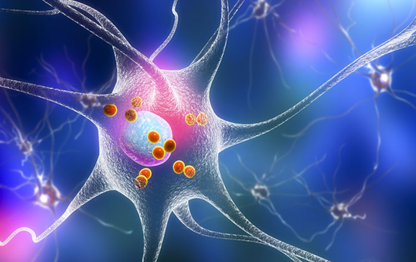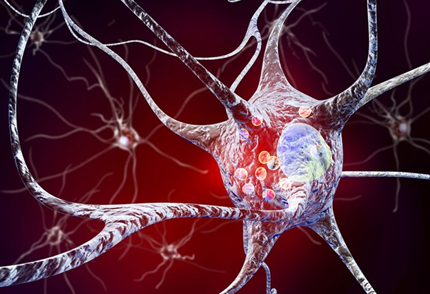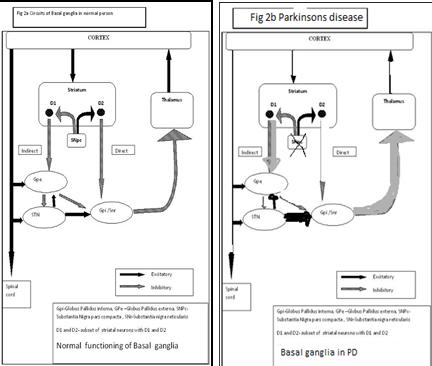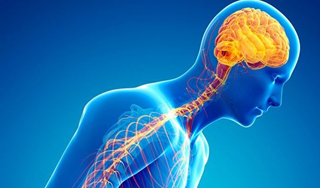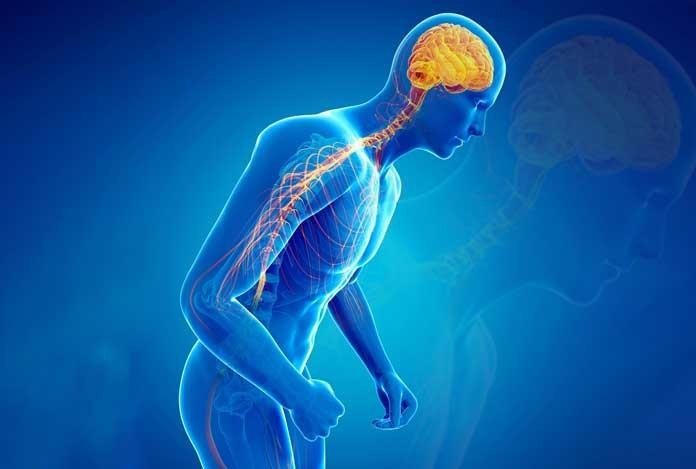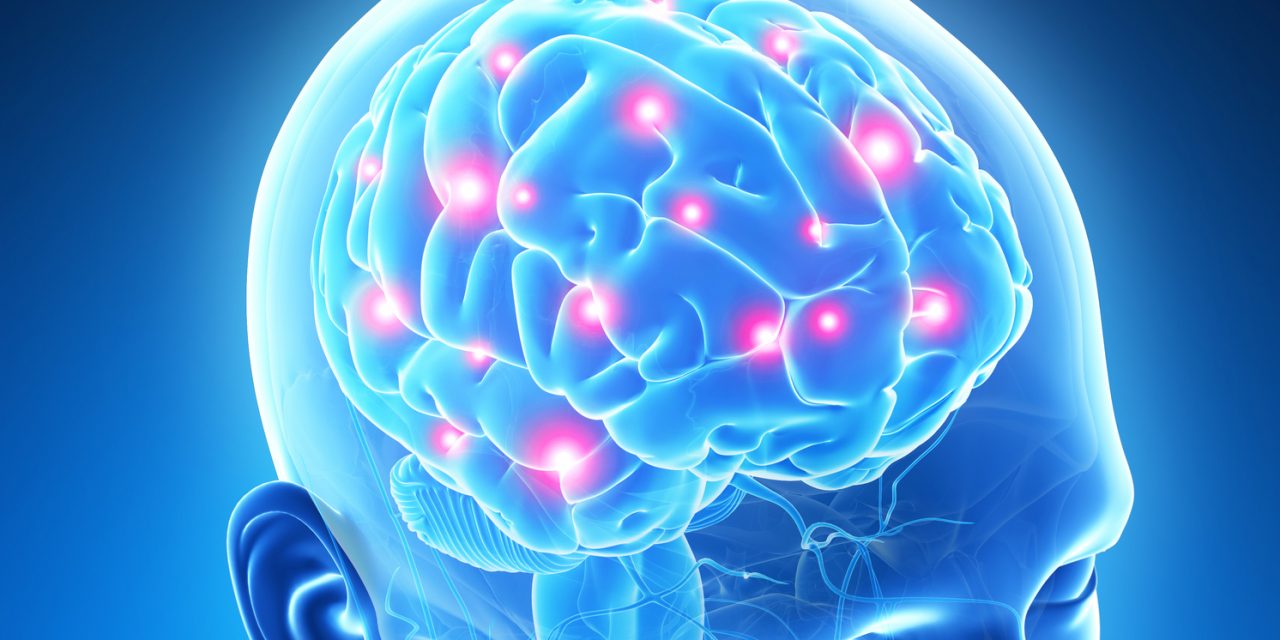Introduction
Neuroscience is well advanced. This transdisciplanary area today spanning a wide range of research through massive investigations empirically and experimentally and development efforts as of the fields of molecular biology of neural or nerve-cells, i.e., the coding genes that the proteins required for functioning the central nervous system (CNS) and encoding genomes to the biological basis of normal and abnormal behavior, the action emotion and cognition - the mental properties by which individuals interact with each other and with their environments, and perception (vision and speech).1 Gene normally comprises adequate deoxyribonucleic acid (DNA) for coding a protein significantly. This study introduces the latest developments in neuroscience especially the techniques for the treatment of Parkinson`s disease. Neuroplasticity and neuroprotection followed by major breakthroughs – latest in neuroscience and recent findings in advanced idiopathic Parkinson`s neurodegenerative disease which is characterized by the four classes of cardinal motor symptoms and subtypes, namely tremor, Bradykinesia (akinesia), postural instability and rigidity.1-4
Objective
The objective of this study is to investigate the recent advances in neuroscience particularly new molecules BT13 and enzymes like PINK1-Parkin switch for Parkinson disease management and molecular mechanisms of neurodegenerative complexities followed by neuroplasticity and neuroprotection – a new hope for PDs.
Materials and Methods
The following methods are explored in this study to the maximum extent. Most of the investigations are examined rigorously and meticulouslyy.
Novel molecular drivers for Parkinson`s disease
BT13 Molecule for Parkinson Disease
Neuroplasticity and Parkinson’s Disease
Aerobics and neuroplasticity
Neuroprotection – a new hope for Parkinson`s
Consider, molecular drivers of Parkinson`s.
Novel molecular drivers for Parkinson`s disease
Neuroscientists have discovered novel molecular drivers for the treatment of Parkinson`s. Molecular drivers of movement disorders especially Parkinson disease had discovered by researchers who furthermore established how they impact the functions of genes implicated in the state of condition that the findings might mark to a possible novel medical managements.2 A group of researchers have discovered novel molecular drivers of Parkinson disease subjects by employing a sophisticated clinico—statistical analysis referred to termed as multiscale gene network analysis (MGNA) and can be proficient to establish how these molecular drivers impact the functions of genes implicated in the Parkinson malady. 3,4 These findings could instant to prospective and latest medical administration and the work done by this team is offering a new stratagem to comprehend many of the Parkinson syndromes and to cure the disease.2 Also, this advancement discovers not just innovative drivers only, to facilitate that it moreover expounds the useful framework of the discovered genes of the PD risk factors and hence showing possible treatment and innovations’ in medical management and administration.The authors designed this technique to explore the molecular mechanisms of neurodegenerative AD complexities. The method culminates heap of the epigenetic, genetic, clinical and pathological, trans-criptomic data gathered which was inherited from enormous clusters of tissue samples, merges and then determines connections among those sample tissues (Figure 1).
The researchers have applied this technique to a collective mutual data set as of 8 remarkable test experiments, and they documented abundant prime monitors of the complex genetic object networks set-up which was not linked by the Parkinson disease prior to. Following, they select to explore the results of STMN2-gene which the inferences derived as major monitor of the PD molecular particles complex net work. The STMN2-gene is usually stated in cells that generate dopamine receptors which are chemical messengers or neuro transmitters which are diminished or depleted and there by the substantia nigra pars compacta pars reticulata (SNpc, pr) become dysfunctional and damaging the basal ganglia in the abnormal Parkinson disease subjects (patients). So, for exploring this anxiety in PD subjects, the researchers reduced the STMN2-gene in the SNpc in the non human primate rat-animal. 4,5 Here, ribonucleic acid called RNA sequencing confirmed that the decrease of STMN2-gene showed to the guided to the functioning high of 9 genes which have been formerly linked by the Parkinson malady. Then the rat progressed Parkinson’s disease similar to the pathologies and this investigation enlightened a novel path for examining the malady further. The novel genes they recognized direct that the this novel provocative pathways ought to be measured as possible objectives which are goals for the newer medicine for evolving especially for the advanced idiopathic Parkinson`s disease patients.
BT13 Molecule for Parkinson Disease
The novel molecule BT13 possibly will facilitate to treat Parkinson’s disease. Researchers5 established a latest particle, i.e. molecule (Figure 2), which possibly will diagnose and also treat Parkinson disease which could be a prospective advance in shaping and structuring the therapeutics for neurodegenerative Parkinson and other movement disorders such as tics and Tourette syndromes and Huntington diseases.
Presently, interventional and one or two medication studies are ongoing for Parkinson`s research. Nonetheless, such medicational studies are unproven to uproot the malady. Hence, there is a need arises for novel drug developments and pioneering treatments are in demand to medicate such conditions. This has led the researchers to establish a novel particle or molecule termed BT13 demonstrated effectual whilst contrasted to the existing medications delighting the chaos. Thus, this novel treatment could structure as the source of potential medical management for pleasuring the syndrome.
The prospective vantage point
The core pathology of Parkinson exist the nigro-striatal-system differentiated by the degeneration of the dopaminergic neurons in the substantia-nigra pars compacta/reticulata (SNpc/pr). SNpc is a branch of the basal-ganglia(BG)circuitry that modulates cortex and aid in well-tuning the motor-activities. There are two dopamine-rgic alleyways—pathways implicated as of the striatum in the direction of the thalamus and cortex direct alleyway that causes to stimuli of the cortex and circuitous alleyway which restrains or inhibits the cortex. The dopaminergic supply starting the SNpc acts by D1-receptors which activate the direct pathway and the D2-receptors which inhibit the circuitous path-way. D1-dopamine-receptor signaling is indispensable to set off the variations of gene-expression in the nucleus accumbency which is decisive for the progression and continuance of addiction or compulsion even obsession. Hence, non appearance of these neurons causes to an augmented firing from the subthalamic nucleus(STN) and global-pallidous-interna (GPi) neurons which cause to improved inhibition and reticence of the thalamic neurons and cortex and largely condensed or concentrated movement and thereby leading to the motor uncoordination.1, 2, 3, 4, 5, 6 Figure 3.7 shows the normal functioning of basal-ganglia and the anomaly in idiopathic Parkinson neurodegenerative disease.
Microelectrode recordings(MER) of the subthalamic-nuclei(STN) neurons from basal ganglia area of the brain reveals increased synchronous-oscillatory neural-activity in Parkinson`s diseased (PD) conditions when compared-to-healthy-brain.
High-frequency-current delivered to STN-neurons causing-their-inhibition, improved-indication-of-symptoms and significant-change in the firing-pattern, hence reorganizing entire basal-ganglia with deep-brain-stimulation(DBS). STN-neurons are not-clearly-visible on MRI(due to-lack-of-contrast between STN, surrounding-structures-on-MRI, targeting-of-STN is difficult). MER gives proof-of-the-correct-positioning of electrode, ensures-accurate-detection of STN-neurons(confirms normal/abnormal), confines its exact-coordinates, enhances-safety, accuracy, quantify the efficacy-of-DBS more-objectively. Availability of MER-results in a vast-data regarding functioning on the neurons-situated deep-in-the-brain may help untying the mysteries of the brain.
Presently, the PD treatment is based on balancing the levels of dopamine-receptors in the body. However the dopamine taken orally is unable to traverse the blood-brain barrier of the patient. Hence, singular remedies can play the roles significantly to uncover different key. So, Glial Cell Derived Neurotrophic Factor (GDNF) can be capable of curing the injured glial-cells. However, the method needs a micro surgery designed for transmitting the particle molecules accurately within the brain. But, so far the results achieved are very poor outcomes in the clinical trials. In rats, this BT13 molecule is able to inducing the generation of dopamine cells and which can guard the cells which generate the dopamine receptors from lysis (i.e., the degeneration of a cell by burst of the membrane of the cell). The significancy of the BT13-molecule is, it efficiently outdo the blood-brain barrier. So, further research on this molecule is worthwhile
The majority of the Parkinson disease patients has had the disease for 15 years and has not walked properly (Figure 4) with confidence for many years. So, Mandar and his team designed a sensor (micro-interface), a sort of neurotic that amplifies signals amid the brain and legs.13-16 Further, the team use sensors to isolate independent muscle movements in patients with tremors. The data is then run through a computer program that matches the muscle activity with the correct dosage of neurotoxin therapy. This therapy erstwhile recognized as a potential treatment for tremors. Some neurotoxins reduce muscle activity and they are available for a variety of uses. The catch is that it is indispensable to know which specific muscles are causing the tremor. If the injection of neurotoxin is given in the wrong place or the patient is not given the correct dose, it might cause dyskinesia`s negatively.
Figure 4
Virtual image – picturesque representation of the Parkinson disability generated through computer programmes.
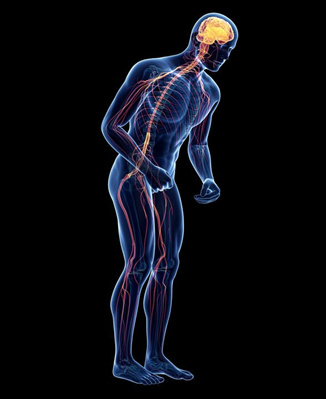
When implanted in PD patients (mean age at the onset was 15 years), they had overcome the frequent falls and created the confidence in them. The team further state that the effects unrelenting yet while the implant was turned off 13.. Professor Mandar and his research team at the Western University, London, Ontario, confident that the electrical-stimuli rekindle and resuscitate the injured or damaged or spoiled feedback responsive mechanism from legs to brain. Professor Mandar further says that the idea was movement difficulties transpired in PD subjects as the signals to the legs from brain were not receiving through. However, apparently it is the signals or waveforms receiving flipside toward the brain which are sullied or tarnished.
Meanwhile, scientists in Canada had come out with new breakthroughs in which Parkinson conditions will walk with gaiety and jauntiness (Figure 5 8).
The researchers8 confirmed the significancy of the molecular-switch within the PD conditions.8 The researchers have long-established that a protective cell mechanism can be disordered in the Parkinson diseased brains. The mechanism guards the cells as against the injury led by defective mitochondria which is a power-plants or power-units of cells which generate energy of the cells. Some clinical trials are ongoing for investigating the results of creatines, that is typically applied to build to develop the muscle, and coenzyme Q10, that functions by the cellular—structures termed as mitochondria, to wipe out some hazardous or perilous chemical-compounds and substances within the molecular human body materials which are generated if the mitochondria are not functioning to its capability. Such as, if at all a power plant discharges hazardous chemical-substances in to the air, then the Q10-co-enzyme would serve-up as a riddle-filter to avoid this occurring as of and maintain the environments atmospheric surroundings etc lucid, letting those approximately to respire healthier.8 Both of these compounds are neuro protective in animal models and have been well tolerated in humans, so there is significant focus on using dietary supplements and drugs that have been utilized for other disorders that in animal models have an effect, of the potential promise of neuro protection for stopping the progression of PD.9 Isradapine is a calcium blocker as an instance of a chemical-compound substance typically used to treat high blood pressure, the researchers are presently exploring. It is interpreted that the isradipine makes rejuvenates aged older dopamine receptors cells young again by changing the pattern of communication of these cells with brain circuits. Researchers are following basic and clinical and clinic-statistical prognostic research to establish whether isradipine and analogous chemical-substances compounds will progress the working of dopamine cells and provide a new therapy for PD. Scientists have made swift progress in delineating potential causes of Parkinson disease. Presently, momentous endeavors in basic fundamental and clinical research are aimed towards design of enhanced medical management, as well as the recognition of neuroprotective strategies which can sluggish syndrome improvement. As researchers persist to discern and determine new a propos the function of genes, risk-factors, and brain-circuits implicated in Parkinson`s, they keep on putting efforts progressively in the direction of a cure. The scientists confirm that in Parkinson’s, a damaged defective molecular toggle that generates the deterioration of neurons. The disease likely results from a combination of genetic and environmental factors which are called as genotype and corresponding physiological factors which are phenotype.
Recent studies10 investigated that PINK1-enzyme called Parkin “toggle” or “switch” that operates in the brain. Investigations have previously proven that when a PINK1-enzyme detects mitochondria in the cells, it toggles on one more enzymes, termed Parkin. This effect in the discarding of defective mitochondria and it guards the cells. Some people with early-onset Parkinson’s disease have mutations in the genes that code for PINK1 and Parkin. Prior to this latest development, it was uncertain whether the PINK1-Parkin toggle has transpired in the brain. Furthermore, scientists were uncertain whether the Parkin-toggle was disordered in PD subjects. Through genetically tailored mice, neuroscientists confirmed that the PINK1-Parkin toggle operates in the brain. The scientists then recognized in PD subjects who had developed an early-onset appearance of Parkinson disease. Through the examination of their cells, the research group corroborated that these entities had a imperfect report of the PINK1-Parkin toggle. The subject’s who undergone for the testing too had alike unusual genetic transmutation which generates the defective molecular toggles.
In another study, drug-targeting of enzymes investigation, researchers examined the protein kinase, PTEN-induced kinase 1 (referred to as PINK1 wherein losses of function mutations direct to Parkinson disease. Numerous appearances of facts specify to “PINK-1” is a master-regulator of a mitochondria harmful retort alleyway-path-way so as to subsist in several dissimilar cell forms together with neurons. In vigorous circumstances PINK-1 is latent; conversely, in the lead discerning mitochondria anxiety, the PINK-1 is triggered and induces the elimination of injured mitochondria by auto-phagy termed as “mito-phagy”. In their further investigation, they revealed that the possibility of discovering singular unusual PD subjects by the decisive transmutations to examine in their lab was as low as one in three-billions. The transmutations transpire during a specific site of the gene that ciphers for Parkin, and it prevents PINK-1-enzyme from being capable to toggle on the Parkin. The team expects that the study will spur further research into the molecular switch and the development of drugs to activate it. From this study it is concluded that it is significant to explicitly goal the PINK-1 enzyme and Parkin-switch as a probable treatment aligned by the Parkinson disease, and hence this investigation strappingly holds good the hypothesis/rationale of this stratagem.
Neuroplasticity and Parkinson’s Disease
Brain is a dynamic organ. It continuously adapts in response to changes in the external and internal environments and surroundings. This property of the brain, so called “brain-plasticity or neuroplasticity,” facilitates recoveries from and damages and injuries to the brain, spinal cord or peripheral nerves injuries and also muscle damages.11 Therefore, how organization of the somatosensory and the motor areas of the brain is affected by spinal cord injuries or damages. This knowledge will help understand how ability of the brain to undergo reorganization can be used for better recoveries from injuries.
Due to spinal cord injuries, sensory information from parts of the body below level to the lesion does not reach the brain. Neurons in the somatosensory cortex that no longer receive sensory inputs get reactivated by the remaining uninjured inputs. Such reorganization can facilitate behavioral resurgences and also distress perceptual abilities and motor control leading to phantom sensations (Figure 6). So, scientists focused on determining the nature and extent of such reorganization, and the properties and mechanisms that underlie such changes.
These issues can be addressed using in vivo models of partial spinal cord injuries. In order to help recoveries from spinal cord injuries researchers are investigating use of stem cells and neural pre cursor cells. With engineering perception, computer and biomedical engineers building brain-machine interface devices to help patients with injuries in association with the neuroscientists - neurologists and neurosurgeons.
Neuroplasticity is the brain’s ability to reorganize itself both in its anatomical structure and how it functions. The brain incessantly creates new cells termed neurogenesis. As soon as we perform latest skills/experience our brain makes innovative ideas connections or point of contacts which we call “synapses” to these newer cells. These newer links are capable to form in a quarter hour of a new activity being commenced are strengthened with repetition and weakened when they are unused. Hence, how and why this activity is pertaining to the Parkinson diseased conditions or subjects (patients). Parkinson’s is a progressive, neurodegenerative disease of the brain. Parkinson’s disease is an enduring, degenerative, neurological disease which roots a person to lose control over various body functions. The syndrome annihilates cells—neurons in a region of brain referred to as the Substantia Nigra (SN). Then this effect in typical Parkinson’s cardinal motor features or symptoms, for instance, tremor, Bradykinesia (akinesia) slow movement, postural instability, rigidity and non motor cognitive dementia and cognitive impairment and memory problems, plus axial features like insomnia and sleep apnea disorders. It is because Parkinson’s disease is a degeneration of part of the brain that we can use neuroplasticity and neuroprotective principles as a method of managing the disease.12
Aerobics and Neuroplasticity
Learning novel skills give good outcome in new-fangled contacts made inside the brain. Hence, one can employ the new and customized aerobics (Figure 7) to make these neuroplastic transformations to transpire in the brain of a subject with Parkinson malady. In connection with the dexterity recording, techniques required to be unpredictable undependable, indiscriminate and tricky. Such aerobic techniques will tolerate for skills to be transferred as of the gymnasium set to existence. Moreover, basics are imperative to reflect on for an effectual neuroplastic based program includes the stimulus-intensity, pulse-width – the signal amplitude, and the convolution of activities.
The study also signifies previously that this method is working good, patients recovered and become healthier. It is dispensable to linger or loiter in anticipation of motor-symptoms present to start neuroplastic guidance and instruction. Mandar and his team says, if you have been recently diagnosed with Parkinson’s Disease or have known about your Parkinson’s for a whilst, drop by an optimum health solutions and speak to one of our accredited exercise physiologists concerning how we can advance and encourage neuroplastic amendments during an individualized aerobic-exercise program tailored to your requirements
Frequent irregular brain signals in Parkinson’s Disease
A brainwave anomaly might be a frequent connection amid Parkinson disease, neuropathic pain, tinnitus, and depression—a tie that researchers of a new-fangled study advise might cause treatment for all four conditions (Figure 8).
Sven13 discussed a hypothesis that ties a disruption of brain signal activity to the feature manifestations of a wide range of neurological disorders (both cardinal motoric and non motoric-symptoms).
Sven and his team investigated electro-encephalo-graph EEG signals and functional magnetic resonance imaging (MRI) brain mapping data as of surplus 530 populace to generate what they believes is the major evaluation of TCD during experimental investigation, which was initially anticipated in a scientific article published in the year 1996.
Sven says, they fed all the data into a prototype model which was designed by the computer system that preferred the brain signals that TCD says would expect prognostically if somebody has fastidious disarray. Not only did the program provide the results TCD envisaged or expected, besides they further convolved an attribute/characteristic spatial-feature to it. Depending up on the syndrome, singular regions of the brain happen to implicated.13, 14 The article consist enormous data test to demonstrate that TCD might be an elucidation for numerous neurological movement and Parkinson`s neurodegenerative diseases.
Brain signals are the oscillatory movements (with rhythmic-fluctuations) of electric voltage-current connecting components of the brain. The significant uniqueness of TCD instigate by means of a drop in brain signals frequencies from α-waves to θ-waves during the subject is at rest in the thalamus, one of two areas of the brain that transmits sensory potentials (the electrical signals) to the cerebral cortex, which then processes those potentials as touch, heat, warmth, pain, etc. An input property of α-band-waveforms is to induce thalamic lateral or tangential reticence (inhibition), which means that specific neurons can quiet the activity of adjacent neurons. Slower θ-waveforms are deficient in this muting—effect, parting (departing) adjoining cells capable of hyper-active. This activity level generates the characteristic irregular anomalous beat of thalamo cortical dysrhythmia. Since there is a lesser amount of input, the region delimited those neurons befalls a halo of hyper activity γ-gamma waves that ventures to the cortex, which means that the brain mapping is heaved or elevated.
Though the α-pattern diminution to the θ-pattern is there inside every disarray - syndrome observed in the Parkinson`s soreness, twinge, and melancholy the site of the inconsistency points to which syndrome is happening during this brain mapping.
On the other hand, if that is within the auditory cortex, then it is departing to tinnitus. If it is inside the somato sensory cortex, then it that will be tenderness.13
If it is into the motor-cortex, then it might be Parkinson movement disorder and also ystonia because it is in the motor cortex.
If it is inside cavernous stratums, then that possibly will be the melancholy. Anyway, every case, the data depicts the correct and equivalent signal disparity and because of this is the reason these pathologies encompass in general and this signature patterns can be observed constantly.
Electro-encephalon-graph data as of 550 subjects was employed. Half of them a propos were controls and rest were diseased in the midst of idiopathic Parkinson`s, tinnitus, constant-ache, Parkinson’s disease, with tinnitus, or with major melancholy. The degree and multiplicity of the study dataset are what set it apart from prior research efforts.13
Neuroprotection and Parkinson`s
Neuroprotection has develop into the focal point of perseverance, hard work and doggedness intended for reducing the progression of cardinal motoric feature-manifestations of Parkinson’s disease. Hence, there is a new hope in neuroprotection for the Parkinson`s.4, 9
One of the most commonest neurologic movement disorders that elders experience, Parkinson’s disease (PD) is a distressing and shocking diagnosis upsetting approximately 2 of every8000older-adults. Though presently there is no curing-remedy and present treatment facilitate improve merely the signs and symptoms more willingly than the disease development, so, unsullied optimistic expectation reclines in novel experimental investigations paying perusal on neuro protection, i.e., ultimate brain protection.4
The origins of PD are not known. PD is a chronic-neurodegenerative, progressive brain disorder that belongs to a larger class of disorders referred to as “Parkinson`s disease and movement disorders”. In PD, one particular population of brain cells—those that produce a chemical messenger termed “dopamine” turn out to be damaged and are vanished in excess of time. The failure of these brain-cells causes the basal ganglia parallel circuitry (circuits) to function anomalous in the human-brain, and those uncharacteristic malformed circuits result in movement problems.9
In a multitude and myriad of cases, the existence of Parkinson disease emerges to be designate future intermittent or haphazard and indiscriminate, albeit notwithstanding quite a few risk factors have been recognized, amid the most individual is age, followed by the environment and genetics. Whilst inherent gene (the genetic) risk-features are distincted individual, the genotypes (one of the genetics) of PD are unclear so far thoroughly. On the other hand, experimental investigators frequently imagine that it is a convolution of environment surroundings and genetics. A number of scientists assume that the convolution of environment and genetics in deed may accelerate a regular aging path–trajectory.
Whether it is PD or Alzheimer’s disease (AD) that this is an aging brain plus to one way or another, the trajectory has sped-up.4, 9 However, the scientists are unsure of this. It is known that there is scratch on some-point or lack-of-function of these dopamine cells at some other point in life, but the scientists are unsure where it originates is, or, for how-long that continue and that goes on and on and on. The early prediction of the signs and symptoms of the disorder possibly will aid us and comprehend the development of the disease for the reason that it is in excess of immediately these dopamine cells in the human-brain. Further, it damages the newer and neighboring cells as well. Therefore, it is regular process to learn more about this malady. In regard to gender, male patients are distressed more than female patients.
People living in urbanized cities and countries or people living in a countryside surrounding environment are distressed heavily. On the other hand, people living in countryside (rural) environment erstwhile connected to imminent and impending limelight to pesticides.
The usual and standard onset of PD is 60 years and the risk progression increases with the age. But there is no objective scale for evaluating the symptoms of PD. There is a subjective scale with which the age of the PD is measured which is based on unified Parkinson disease rating scale (UPDRS) stage III and the score is 5 or above (5years or above indicated that the disease is in advanced stage). Theory or hypothesis advocates that the syndrome development starts musch earlier and feature-manifestations (the signs and symptoms) become apparent. A just above the teenager additional synthetic (artificially simulated) brain is equal to balance and function reasonably pro a little time. The brain is an incredibly complex organ and can probably resolve and concord some tiny blips or bugs in the structure; yet, the aging method possibly will minimize the capability to balance and recompense, more quantity of dopamine neurons are vanished, and then characteristic disease features will appear.
The symptoms and diagnosis of Parkinson disease
Movement tribulations are a typical characteristic signs of Parkinson disease and can be able to differ amongst those individuals in occurrence, predominance and sternness. Every one could have one or more of these features, a few somewhat inferior than the others.
Some familiar cardinal motoric features of PD are: Tremor, Bradykinesia (akinesia), postural instability and rigidity. Early signs of PD can be so restrained that the patients can simply and frequently slip-up them for facades of common aging. The signs actually could be delicate primarily. A person can observe that their hand quiver while writing or scribbling and gets slighter, that their hand begins to tremble or wobble, that they possibly will have further complexity in footing up, or that they are a modest shaky and sluggish. Now the majority of those effects are somewhat incredible you may sense could occur as you get older, however what begins to occur or turn out is that they slowly and steadily and progressively will become shoddier, and they begin to distress and impinge on regular actions—activities and things akin to discussing talking, footing walking, drinking eating, or reading a regular news paper. Just then, at that juncture, they start thinking of visiting the clinicians. Also, there are some common signs which frequently herald the cardinal motor symptoms of Parkinson`s, together with the trouble in sleeping, insomnia (sleep disturbances) or apnea, some change in sense of smell, tiredness or fatigue, twitchy legs and constipation as well.
A huge research is going on around the world and into what these early signs and symptoms may mean and if that can facilitate expect an enhanced prognostic identifications and medical management of the disease. The diagnostics of Parkinson`s disease is directed in general through presenting cardinal motoric-features as there is no blood or other test to categorize the syndrome. While if one may consider magnetic resonance imaging (MRI)-brain scrutinize could be flourishing in identifying the Parkinson disease, that gives anatomical-structural variations in the brain, they show typical in PD as these cells that disappear are less in populace, however they have enormous impact on the PD subjects movement and their motor control.
Diagnostics can also be complex problematical and in reality the supplementary diseases also can have alike symptoms to those individuals show signs of Parkinson`s. Once, the older patients on set for management, a more definitive diagnosis can be made. Parkinson’s disease may be difficult to diagnose initially, but the classic PD symptoms and response to medications are supportive factors.4, 9
The Parkinson treatment past and present
The balance of treatment for PD is very individualized because older adults can have varying degrees of symptoms, and no two patients react in exactly the same way. The gold standard for treating Parkinson`s, which has been used for many years as its primary treatment, is Levodopa (the metabolic precursor of dopamine). A type of dopamine-replacement therapy, It is a compound that is naturally found in plants and animals, and it is a pre cursor to dopamine. Letting that, it is characteristically specified by one more compound referred to as carbidopa to make sure its capability to traverse the blood-brain barrier and get into the brain. When it gets into the brain, the brain cells convert L-dopa into dopamine, which reduces the tremor and some of the cardinal motoric-symptoms and hence lets the patients to go ahead reasonably usual lives. However, L-dopa may not help with balance and other non motor symptoms in fact non motor symptoms such as cognitive dementia cognitive impairment and other auxiliary features like slurred speech/ variation in speech, etc emerge as dyskinesias, i.e., side-effects like hallucinations, sleep disorders, etc. So, there are some side effects or dyskinesias with the L-dopa and also with the carbidopa. Indeed, Levodopa can be able to generate its own difficulties and quandaries to the Parkinson`s over a period of time. As the patients are on L-Dopa medication for a longer period of time, they tend to have dyskinesias (side-effects), which are unexpected and involuntary movements abruptly, noting that they can affect older adults’ quality of life (QoL). If a person having tough time with PD in gait then L-Dopa can makes the patient better but in some patients this drug all of a sudden get those eccentric and also weird movements. One of the challenges facing therapeutic development for PD is discovering the means to improve motor function and decrease involuntary movements while maintaining quality of life for the individual and providing as full a range of motion as possible. So, De Long at Emory University School of Medicine formulated a new model for the brain's circuitry and exposed a fresh target for this illness, whereas, Benabid at Joseph Fourier University, Grenoble devised an effective and reversible intervention that remedies neuronal misfirings. Their work has culminated in an effective treatment for more than 200,000 individuals worldwide with severe illness who suffer from complications of L-Dopa therapy. For their discovery and innovation the duo received research prize “2014 Lasker~DeBakey Clinical Medical Research Award” for the design and development of deep brain stimulation of the subthalamic nucleus (DBS-STN), a brain neurosurgical technique that reduces tremors and restores motor function in patients with advanced Parkinson's-disease.4
There are diverse classifications of dopamine substitution drugs that, through targeting singular elements (ingredients’) of the dopamine metabolic alleyway trajectory as L-dopa does, enhance the production of dopamine.
Compounds for instance B inhibitor, a monoamino oxidase, Azilect can block the degradation of dopamine, and still others enhance the activity of dopamine at its receptor (a dopamine signal). Fundamentally, these drugs progress dopamine signaling in the brain to aid the damaged circuits - circuitry of basal ganglia.
Another category of drugs is used to balance other brain chemicals that are also affected following dopamine cells expire, and also there is another class-of-drugs which will distress the PD patients may experience with non motoric-feature manifestations or symptoms, for example, depression melancholy, ortho-static hypo-tension anxiety.
As discussed above, for Parkinson`s whose features are modestly enhanced through medication, DBS has been executed which can be a thriving surgical therapy for patients as it may shrink the necessitate for medication and progress dyskinesias. Modern confirmations advocate that DBS enhances significantly movement and QoL in the subjects of Parkinson`s.
Brain and its neuro protection can hope the Parkinson`s treatment
Even though numerous medical managements/treatments and medications are being utilized for older subjects with Parkinson disease, all the current medications work on managing or utmost at best reducing symptoms only. However, disease progression may not be overcome. Hence, the experimental investigations are into neuro protection which is aiming to change that. Neuro protection is wherever experiment investigative in to explore research is going on presently as L-dopa cannot impede the progression of the disease. Indeed, all the available drugs cannot prevent the progression of PD. Therefore, widespread attempt in this multifaceted area at present in both clinical trials and also basic research.
Neuro protection has researchers looking down new avenues for a cure, such as dietary supplements and drugs that have been used in the treatment of other disorders. For example, several ongoing clinical trials are examining the effects of creatine, which is commonly used to build muscle, and coenzyme Q10, which “works through cellular structures called mitochondria, the power plants of cells, to clear any harmful substances that are produced if the mitochondria are not working to capacity. For example, if a power plant were releasing harmful chemicals into the air, coenzyme Q10 would serve as a filter to prevent this from happening and keeps the environment clear, allowing those around to breathe better. Scientists have made advances in PD and possible causes of PD. Now, momentous endeavors in clinical and basic fundamental investigations are intended in the direction of growth of enhanced therapies, together with the classification of neuro protective strategies which might sluggish the disease sequence. As scientists go on to expose new about the function of genes and genomes, risk-factors, and brain-circuits involved in PD, they function steadily progressively in the direction of curing therapy.
Conclusions
This study explored the recent discoveries in neuroscience especially for the Parkinson disease and movement disorders. Neuroscientists have discovered novel molecular drivers for the treatment of Parkinson`s disease. Molecular drivers of movement disorders particularly Parkinson`s disease had discovered by researchers who furthermore established how they impact the functions of genes implicated in the state of condition that the findings might mark to a possible novel medical managements. Hence, this novel provocative pathways ought to be measured as possible objectives which are goals for the newer medicine for evolving especially the advanced idiopathic Parkinson`s disease patients.
BT13 demonstrated effectual whilst contrasted to the existing medications delighting the chaos. Thus, this novel treatment could structure as the source of potential medical management for pleasuring the syndrome. Novel studies investigated that PINK1-enzyme called Parkin “toggle” or “switch” that operates in the brain. Investigations have previously proven that when a PINK1-enzyme detects mitochondria in the cells, it toggles on one more enzymes, termed Parkin. This effect in the discarding of defective mitochondria and it guards the cells (as possible guideposts). From this study it is concluded that it is significant to explicitly goal the PINK-1 enzyme and Parkin-switch as a probable treatment aligned by the Parkinson disease, and hence this investigation strappingly holds good the hypothesis/ or rationale of this stratagem.
Neuroplasticity is the brain’s ability to reorganize itself both in its anatomical structure and how it functions. The brain continuously creates new cells called “neurogenesis”. When we practice new skills or experience new things our brain makes connections or point of contacts which we call “synapses” to these newer cells. These newer links are capable to form in a quarter hour of a new activity being commenced are strengthened with repetition and weakened when they are unused. Hence, how and why this activity is pertaining to the Parkinson diseased conditions or subjects (patients). Learning new skills give good outcome in new-fangled contacts-links made inside the brain. Hence, one can use the new and customized aerobics to make these neuroplastic transformations to transpire in the brain of a subject with Parkinson malady.
Scientists have made advances in PD and possible causes of PD. Now, momentous endeavors in clinical and basic fundamental investigations are intended in the direction of growth of enhanced therapies, together with the classification of neuro protective strategies which might sluggish the disease sequence. As scientists go on to expose new about the function of genes and genomes, risk-factors, and brain-circuits involved in PD, they function steadily progressively in the direction of curing therapy.
Authors contribution
This study designed and developed by the first author and the inputs - interpretation and analysis and also computer programmes are developed by the rest of the authors.

